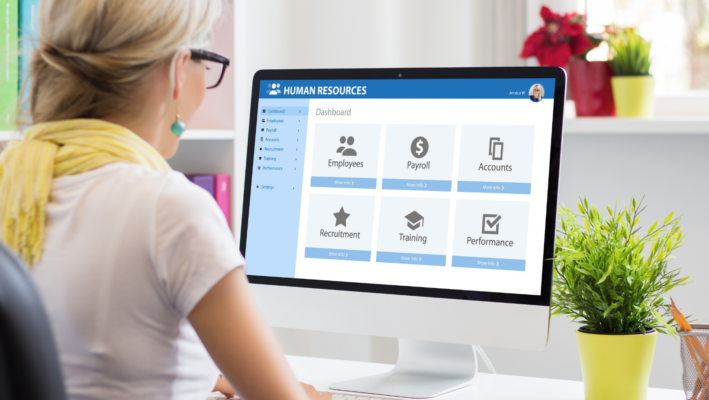Is HR Technology a Compliance Risk?
One of the most important responsibilities of an HR professional within a business is to ensure that the company is adhering to the laws and regulations that govern labor practices within their country, state, or municipality.
Called HR compliance, this practice (and profession) is not only designed to protect the company from legal and reputational threats (noncompliance can lead to penalties, fines, and lawsuits), but also to ensure a safe, healthy, fair, and equitable workplace for all employees.
HR compliance is complicated work. It involves building policies and procedures to make certain that the organization is following the law, and creating internal policies, procedures, and education that ensure that all employees are too. Plus, HR professionals must stay consistently updated on ever-evolving labor laws and any other updates to federal, state, or municipal compliance regulations.
In the face of this challenge, many employers are turning to HR technology to manage compliance, plus all other HR tasks, and reduce risk, but in some cases, these tools have the power to open companies up to more risk if used without caution and without a strategy.
Compliance Risks of Using HR Technology
HR departments collect and house some of the company’s most sensitive data. While other departments focus on customer data, product info, and other private intellectual property, HR manages critical employee data. This data includes workers’ personal information, salary details, and more, which, if leaked, can cause major legal, financial, and reputational damage to the larger organization.
To stay compliant, employees’ and candidates’ personal and health information must be kept confidential, and that includes protecting electronic copies and any other digital information from unauthorized access.
Now that most employers are performing HR tasks online and storing information in cloud-based systems, attacks on employee data and HR departments are increasing. As such, it’s essential that HR professionals make a strategy for mitigating cybersecurity risk when implementing any kind of HR technology––including selecting a tech solution that has sufficient security built in. This work will take closer coordination and collaboration between HR and IT.
Additionally, although many organizations are starting to consolidate their HR technology stack into one system–known as a Human Resource Management System, equipped with built-in compliance tools and information–many others still have disparate, disconnected systems (i.e. one kind of software for payroll, another for benefits, and a third for hiring). This tech setup opens the door for compliance risk since outdated, nonintegrated HR systems generally don’t offer timely on-demand resources or real-time guidance from HR professionals on changes in employment laws per location––nor do they automatically fix compliance issues (i.e. payroll percentages for certain deductions) when there are updates to the law. It’s all manual, clunky, and open to human error.
Three Ways to Use HR Tech For Good
While HR technology does pose a threat to compliance, the benefits and opportunities far outweigh the risk. Regulations are constantly evolving and compliance tasks themselves are often time-consuming and tedious, but HR tech can shoulder some of that burden to make compliance more streamlined.
Plus, most HR software, for processes like payroll and recruiting, now has compliance tools built in, making it easier than ever for HR professionals to stay on top of their responsibilities. Below are three ways employers can use HR technology to improve compliance management.
Ensure Recruiting Practices Are Fair
Recruiting technology, like Applicant Tracking Software (ATS), helps HR leaders streamline the hiring process on the front end and the compliance process on the back end. When it comes time to send in hiring data to the U.S. Equal Employment Opportunity Commission (EEO) and the Office of Federal Contract Compliance Programs (OFCCP), an ATS makes it easy to pull comprehensive, free-of-human-error reports that demonstrate the fairness of a recruiting program. Plus, since recruiting technology is now designed with compliance in mind, employers are set up for success when it comes to collecting, managing, protecting, and securing sensitive information in line with employment laws.
Automate Pay Equity and Pay Transparency
Pay transparency laws are changing rapidly and pay equity is an increasingly hot topic. Now, openly sharing employee salaries in the name of equity is becoming more normal at organizations big and small. Pay transparency laws require employers to disclose a wage or wage range to prospective candidates or current employees, and to keep a closer pulse on pay practices at their organization. By leveraging HR technology, like payroll platforms or an all-in-one HRIS, HR professionals can analyze real-time data to ensure fair pay practices. For example, HR pros can compare compensation across various axes, like department, job title, gender, location, and race to figure out how to even the playing field.
Streamline Training
Many states and municipalities require that private sector employers train their employees on a variety of topics, including sexual harassment, diversity, safety, and health. Thankfully, there are plenty of employee training platforms out there that make it easier for HR professionals to stay compliant. These platforms make it easier to conduct training, track who has completed training, who still needs training, and when training needs to be retaken for certification purposes. Many of these platforms are regularly updated to keep up with evolving regulations and guarantee compliance.
For more ideas on how to leverage HR technology to streamline compliance and other critical HR tasks, tune in this week for another episode of America Back to Work: Expert Interview Series. We’re sitting down with Chad Sowash to learn how companies can reduce the risk of HR tech while reaping the rewards.







